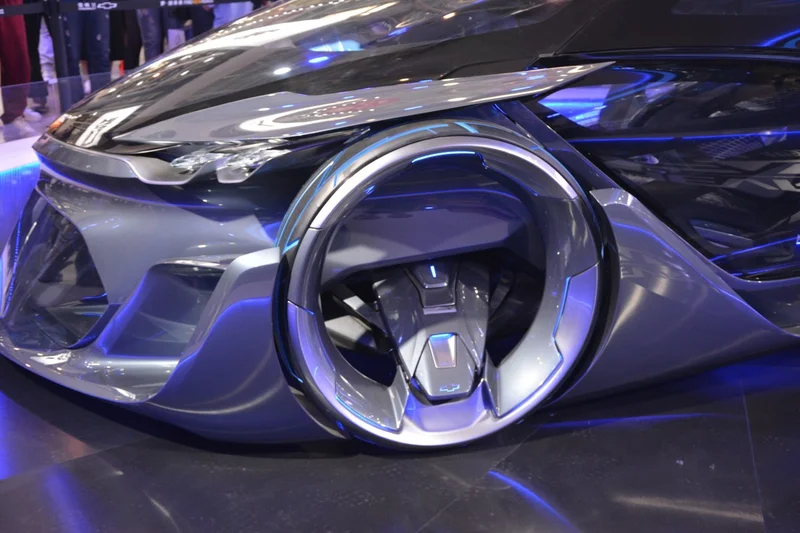Blue Origin's Twin Mars Probe Launch: What It Means for New Glenn's Future
New Glenn's Mars Mission: A $107 Million Gamble That Just Might Pay Off
Blue Origin's second New Glenn launch wasn't just another rocket test; it was a $107.4 million bet on a new approach to planetary exploration. The ESCAPADE mission, comprised of two small satellites named Blue and Gold, is headed to Mars, but not in the way you might expect. Instead of a direct shot, they're taking the scenic route – a year-long loiter orbit around Earth before slingshotting to the red planet.
The "Loiter and See" Approach
This unconventional trajectory, orchestrated by Advanced Space LLC, is the key. Mars launch windows typically open every two years, dictated by the alignment of Earth and Mars. But ESCAPADE is sidestepping this constraint. The probes will swing a million miles out, past the moon's orbit, before looping back for a gravity assist. It's like playing billiards with planets, using Earth as a cue ball.
Robert Lillis, the principal investigator, calls it a "very flexible approach," one that could "queue up spacecraft" without waiting for those bi-annual windows. And this is where my interest piqued, because that word "flexible" is code for "potentially cheaper" – and I’m always looking for ways to save a buck. The question is, does this flexibility translate to real-world savings and increased mission frequency?
It's a gamble, no doubt. A longer mission means more exposure to space radiation and increased risk of component failure. But the potential payoff is significant. Imagine a future where Mars missions aren't tied to rigid launch windows, where spacecraft can be launched on demand, regardless of planetary alignment. The ESCAPADE mission is pioneering just that.
The satellites themselves, built by Rocketlab, are also part of this cost-cutting equation. At $107.4 million, the entire mission is a steal compared to the multi-billion-dollar behemoths that usually explore Mars. These small, focused probes represent a shift towards "fast-track planetary missions."
The Science Behind the Scheme
But it's not just about the money. Blue and Gold are designed to tackle a fundamental question about Mars: why did it lose its atmosphere? Unlike Earth, Mars lacks a global magnetic field, leaving its atmosphere vulnerable to the solar wind. The ESCAPADE probes will work in tandem, measuring the interaction between the solar wind and the Martian atmosphere, providing a "stereo view" of the processes stripping away the planet's air.

Data from previous missions suggests that atmospheric escape is a major driver of Martian climate evolution. Mars was once warm and wet, but it's been a frozen desert for the last two billion years. Understanding how the atmosphere was lost is crucial to understanding Mars' past – and its potential future.
This is the part of the report that I find genuinely puzzling: why weren’t these probes launched sooner? The article mentions that ESCAPADE was originally slated to ride along with NASA's Psyche asteroid probe. Details on why that fell through remain scarce, but it raises questions about mission planning and resource allocation. Was it a technical issue, a budget cut, or simply a change in priorities?
The launch itself was delayed by several days due to stormy weather, both on Earth and in space. A powerful solar storm threatened to disrupt the rocket's electronics. This highlights the inherent risks of spaceflight. You're not just battling the laws of physics; you're also at the mercy of the sun.
The New Glenn rocket, after a failed first-stage landing in its maiden voyage last January, achieved a successful touchdown this time around. The 188-foot-tall first stage, nicknamed "Never Tell Me The Odds," (a parenthetical clarification for those not familiar with Star Wars) featured upgrades to improve performance. And I’ll admit, the data bears it out, as the rocket successfully landed on the barge. The rocket will be hauled back to Port Canaveral for refurbishment, much like SpaceX's Falcon 9 boosters.
Dave Limp, CEO of Blue Origin, stated, "It turns out Never Tell Me The Odds had perfect odds—never before in history has a booster this large nailed the landing on the second try." While technically true, it's also a bit of marketing spin. SpaceX has been landing Falcon 9 boosters for years, but I will concede that this is a significant milestone for Blue Origin. New Glenn Launches NASA’s ESCAPADE, Lands Fully Reusable Booster
A High-Risk, High-Reward Play
The ESCAPADE mission is a high-risk, high-reward play. If it succeeds, it could revolutionize planetary exploration, making it cheaper, faster, and more flexible. But even if it fails, the data collected along the way will be invaluable. The mission is scheduled to reach Mars in September 2027, giving us plenty of time to analyze the data and assess the results. For me, it’s a wait and see.
Is This the Dawn of "On-Demand" Mars Missions?
-

Warren Buffett's OXY Stock Play: The Latest Drama, Buffett's Angle, and Why You Shouldn't Believe the Hype
Solet'sgetthisstraight.Occide...
-

The Business of Plasma Donation: How the Process Works and Who the Key Players Are
Theterm"plasma"suffersfromas...
-

The Great Up-Leveling: What's Happening Now and How We Step Up
Haveyoueverfeltlikeyou'redri...
-

NJ's ANCHOR Program: A Blueprint for Tax Relief, Your 2024 Payment, and What Comes Next
NewJersey'sANCHORProgramIsn't...
-

The Future of Auto Parts: How to Find Any Part Instantly and What Comes Next
Walkintoany`autoparts`store—a...
- Search
- Recently Published
-
- Netflix Stock: Split Speculation and What It Means – What Reddit is Saying
- Saylor Moon: What's the Deal?
- World Liberty Financial, Trump, and Crypto: What's the Connection?
- Social Security Retirement Age Changes: What to Expect and the Impact – What Reddit is Saying
- Nvidia Stocks: AI Hype vs. Reality
- Ethereum Price: Plunge vs. Rally – What We Know
- Bitcoin's Bear Market: Liquidity Worries vs. Future Potential
- Nvidia Stock Price: What's Driving the Surge and What's Next
- Avelo Airlines' Route Shuffle: What's the Deal?
- Starlink Satellite Count: Orbit Numbers and Falling Concerns
- Tag list
-
- Blockchain (11)
- Decentralization (5)
- Smart Contracts (4)
- Cryptocurrency (26)
- DeFi (5)
- Bitcoin (30)
- Trump (5)
- Ethereum (8)
- Pudgy Penguins (5)
- NFT (5)
- Solana (5)
- cryptocurrency (6)
- XRP (3)
- Airdrop (3)
- MicroStrategy (3)
- Stablecoin (3)
- Digital Assets (3)
- PENGU (3)
- Plasma (5)
- Zcash (5)
- Aster (6)
- investment advisor (4)
- crypto exchange binance (3)
- ethereum price (3)
- SX Network (3)
